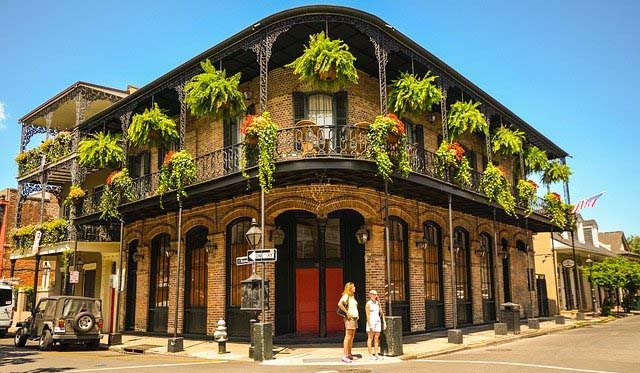
by Kritika Panase
New Orleans is one of the unique travel destinations in the USA, and you won’t find any other place like that in the country. It is famous for an array of things – incredible jazz music, crazy Mardi Gras celebrations, Cajun cuisine, breathtaking architecture and even voodoo. If you have your US visa ready, you must indeed plan a visit to this splendid city. I recently got a chance to visit this gorgeous destination, and here is my pick of the nine things you must not miss in New Orleans.
 What To See In New Orleans French Quarter
What To See In New Orleans French Quarter
The oldest neighborhood in the city is undoubtedly one of the best attractions in New Orleans. I had heard so much about this charming neighborhood and decided that it will be on the top of my bucket list. Also known as the Vieux Carre, the French Quarter is dotted with shops, cafes, boutiques, restaurants, and bars. Many of its historic buildings dating back to the late 18th Century when the Spanish ruled the city. I spent a lot of time walking around the street, exploring the place, soaking in the culture, and relishing some mouthwatering food. You must not miss the traditional music of the Preservation Hall Jazz Band.
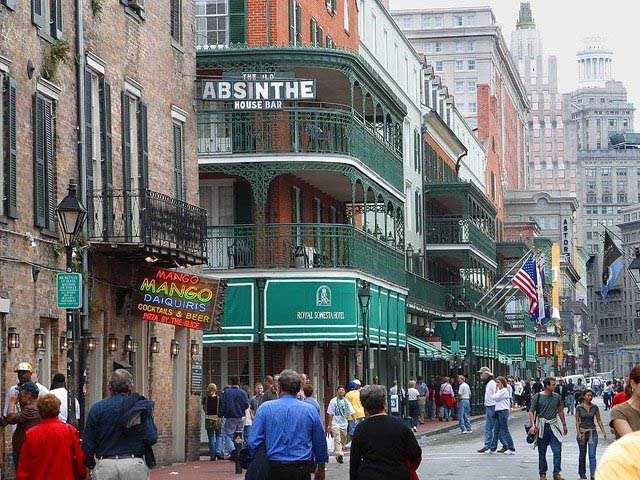
What To Do On Bourbon Street
The infamous nightlife strip, Bourbon Street, may not be everyone’s cup of tea. But it features as of the most popular attractions in New Orleans for a reason. Since it was my first trip, I wanted to include it in my itinerary. The 13 blocks long street is lined with restaurants, bars, souvenir shops, and cafes and is an excellent way to soak in the city’s vibrant culture. Unfortunately, I didn’t visit during the famous Mardi Gras, but this place is the hub of all festivities.
Founded in 1853, City Park houses the largest collection of live oak trees globally, many of which are more than 600 years old. It is also one of the oldest parks in the USA, and I had a great time exploring the lush greenery and serene walkways. The park is replete with lovely bridges, small ponds, and many sculptures, making for great selfie points. My favorite place here was the Couturie Forest, a beautiful nature trail featuring Laborde Mountain, the highest point in New Orleans.
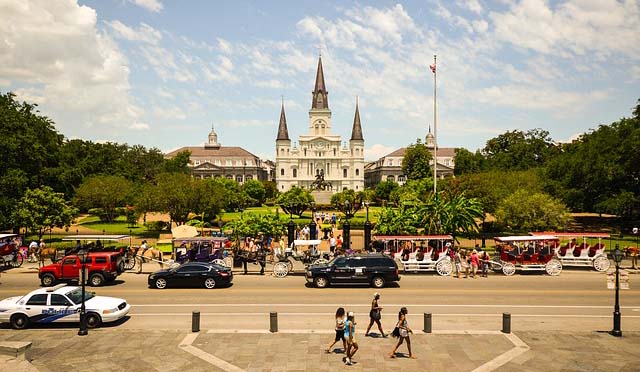
Jackson Square
Located in the heart of the French Quarter, Jackson Square is a national historic landmark. You can see the statue of battle hero, Andrew Jackson, in the center. This timeless attraction faces the Mississippi River and is surrounded by historic buildings such as the St. Louis Cathedral, the Presbytere, Cabildo, and the Upper and Lower Pontalba Apartments, the oldest apartment buildings in the US.
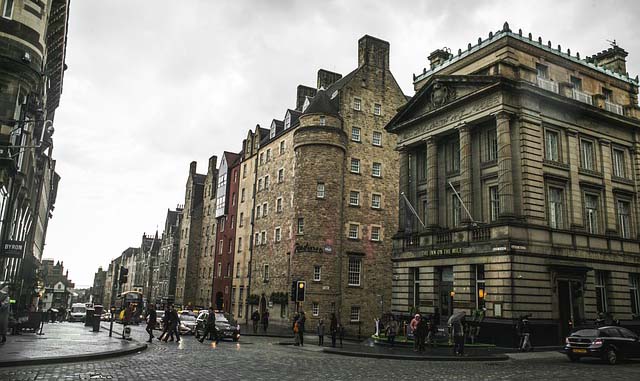
Royal Street
Majorly flocked by art lovers, the iconic Royal Street has a bevy of art galleries, high-end hotels, and family-owned antique shops. Stretching from Canal Street to Esplanade, it is an outstanding shopping and dining destination. This bustling street also has many street musicians, and I stopped by to listen to some awesome music quite a few times. The cobblestone pathways, mule-drawn carriages, and enchanting architecture reminded me of a French 19th-century city.
National WW II Museum
Located in New Orleans Central Business District, the National WW II Museum is a sprawling complex and provides a great educational experience. Affiliated with the Smithsonian Institution, this museum has many award-winning exhibits that take you through a journey of the American side of World War II. I was utterly overwhelmed looking at jeeps, actual planes, and Higgins Boats. It also has a restaurant, a theater with WWII-era musical performances, and a wonderful gift shop with unique 1940s-inspired clothing and gifts.
I enjoy live music and jazz music a lot, so visiting the famous Frenchmen Street was a must. The liveliest section of the street is made of three blocks that offer top-notch live music venues and bands. I also spent some time browsing through the delightful bookstores, looking at the lovely Creole-style Townhouses, and enjoying coffee at one of the many coffee shops. I spent the evening gorging on a delicious dinner at The Spotted Cat while enjoying some fantastic music. Other popular eateries here are the Blue Nile, The Maison, and Adolfo’s.
New Orleans Museum of Art
Situated at the edge of the Big Lake, within City Park, the New Orleans Museum of Art (NOMA) is a treasure-trove of brilliant masterpieces. The façade itself is majestic and grand, having Greco-Roman columns and alabaster walls. The museum has more than 40,000 pieces, from modern work and the Italian Renaissance to photography and digital media. I was astounded by the stunning works of great artists such as Monet, O’Keefe, Rodin, and Degas. Don’t miss the Sydney and Walda Bestoff Sculpture Garden, a lush, landscaped garden that showcases the museum’s sculpture collection.
Algiers Ferry
I hopped into the Algiers Ferry to enjoy the great Mississippi River firsthand. Though it was a short ride, I got to enjoy some marvelous views of the city from the water and get the feel of this mighty river. I also spent some time strolling through the tiny neighborhood of Algiers Point that is brimming with cafes, bars, and lovely homes, oak-lined streets.
New Orleans, Louisiana has a very different vibe and is a melting pot of various cultures. You can find myriad influences from Spanish and French to Caribbean, West African, and Native American. Be it rich history, fantastic culture, or vibrant art; there is something for everyone in this destination.
For More Information
- Visit New Orleans Official Tourism Website
- The Official Louisiana Information Site
- New Orleans Jazz and Heritage Festival
New Orleans Tours Now Available
- Save on Mardi Gras Tours in New Orleans
- Viator VIP: Preservation Hall Jazz Club and Dinner at Restaurant R’evolution
- Experience Mardi Gras in New Orleans
About the author:
Kritika is a software engineer, travel blogger, pasta-lover, adrenaline junkie, owner of a dog, and technophile. While She has her one part of the head sink into the world of changes and innovation, She tries unique experiences like exploring new cities, hiking mountains. Travelling keeps her sane. In short, for her, life is all about living in the moment.






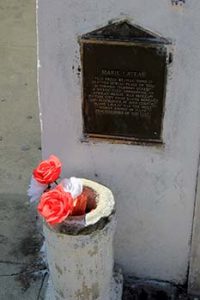



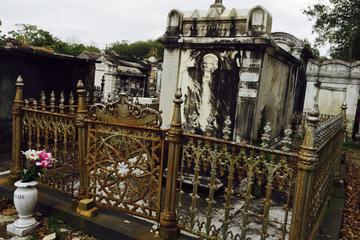


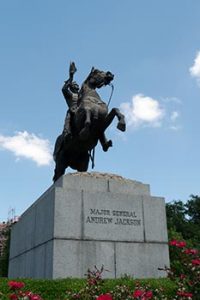

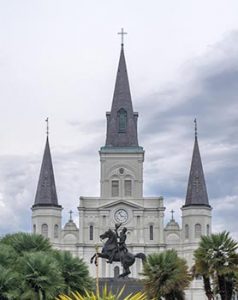

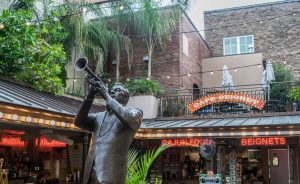
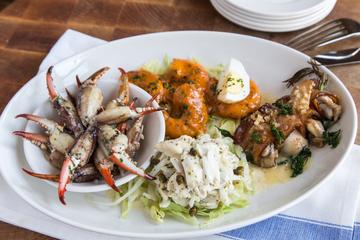
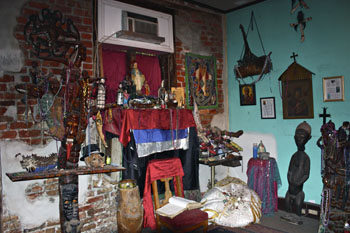
 Statues of saints seemed more out of place than the skeletons because this was no church. Then there were the voodoo dolls. Voodoo practitioners believe that voodoo dolls don’t just represent someone but actually become that person when a personal item such as a lock of hair or fingernails is added.
Statues of saints seemed more out of place than the skeletons because this was no church. Then there were the voodoo dolls. Voodoo practitioners believe that voodoo dolls don’t just represent someone but actually become that person when a personal item such as a lock of hair or fingernails is added.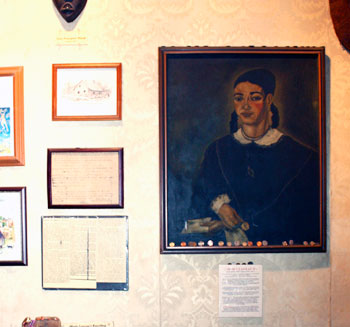 Our education continued when our tour guide reported that New Orleans voodoo is synonymous with voodoo queen Marie Laveau (1793-1882), whom he referred to as a free woman of color. NU’awlons pointed up at her picture on the wall as we left the museum to begin the walking tour. She was at the height of her power/influence in the 1850s. Although she was not psychic she had built up that reputation by collecting gossip when she visited various houses in the French Quarter to braid women’s hair.
Our education continued when our tour guide reported that New Orleans voodoo is synonymous with voodoo queen Marie Laveau (1793-1882), whom he referred to as a free woman of color. NU’awlons pointed up at her picture on the wall as we left the museum to begin the walking tour. She was at the height of her power/influence in the 1850s. Although she was not psychic she had built up that reputation by collecting gossip when she visited various houses in the French Quarter to braid women’s hair.
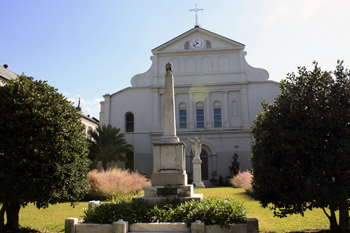 Our first stop was the St. Louis Cathedral but not to visit the interior. Instead we walked outside to the rear of the building where we found a small garden fenced off from the public. Peering through the wrought iron fence we saw a statue of Christ with raised arms. Marie Laveau was a member of this church congregation and she was known to perform voodoo rituals in this garden.
Our first stop was the St. Louis Cathedral but not to visit the interior. Instead we walked outside to the rear of the building where we found a small garden fenced off from the public. Peering through the wrought iron fence we saw a statue of Christ with raised arms. Marie Laveau was a member of this church congregation and she was known to perform voodoo rituals in this garden.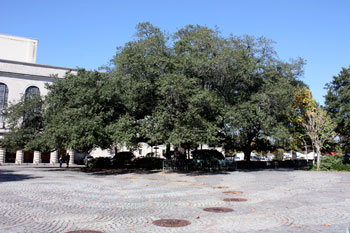 We crossed Basin Street and entered the neighborhood of Treme to visit Congo Square in Louis Armstrong Park. Creole slave owners strictly enforced the practice of Catholicism but the slaves circumvented this by gathering at Congo Square each Sunday (their one day off during the week under the Code Noire) to sing and gyrate to the rhythm of drum beats. They also participated in voodoo rituals.
We crossed Basin Street and entered the neighborhood of Treme to visit Congo Square in Louis Armstrong Park. Creole slave owners strictly enforced the practice of Catholicism but the slaves circumvented this by gathering at Congo Square each Sunday (their one day off during the week under the Code Noire) to sing and gyrate to the rhythm of drum beats. They also participated in voodoo rituals.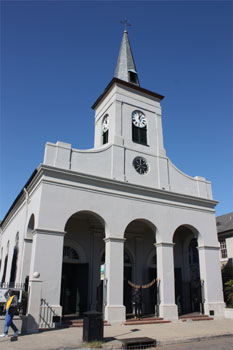 After you find your inner beat, leave Congo Square and visit the nearby Our Lady of Guadalupe Chapel. This church boasts a number of local voodoo practitioners among its congregation but you likely will not be able to identify them because they look just like anybody else.
After you find your inner beat, leave Congo Square and visit the nearby Our Lady of Guadalupe Chapel. This church boasts a number of local voodoo practitioners among its congregation but you likely will not be able to identify them because they look just like anybody else.
 Exit the Chapel and proceed to St. Louis Cemetery #1. The living is admitted free but the families of the dead must pay to maintain the upkeep of all the above-ground tombs that surround you. The French had a custom of interring people above ground because they did not want to have buried coffins rising to the surface and falling open because of the high water table and flooding for which the Crescent City is famous. With a little imagination you have the making of a good horror movie where the zombies rise from the open coffins in search of the living.
Exit the Chapel and proceed to St. Louis Cemetery #1. The living is admitted free but the families of the dead must pay to maintain the upkeep of all the above-ground tombs that surround you. The French had a custom of interring people above ground because they did not want to have buried coffins rising to the surface and falling open because of the high water table and flooding for which the Crescent City is famous. With a little imagination you have the making of a good horror movie where the zombies rise from the open coffins in search of the living.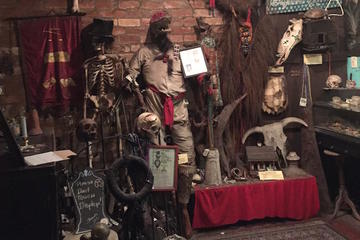

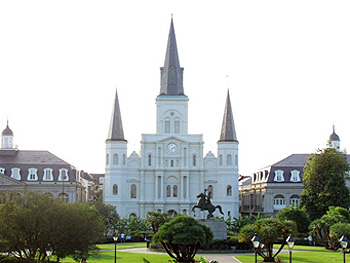
 New Orleans is known for many other things: seafood, e.g. crawfish, shrimp, crab and also for its music and musicians. The New Orleans area has the most home grown musicians in the country. They run the gamut from rock and roll, blues, jazz and even classical, from Fats Domino and Professor Longhair to Louie Prima and Louie Armstrong. However if New Orleans is known for anything it is a slogan and an attitude of, “Laissez les bons temps rouler, let the good times roll.” And that’s the truth! Ask any native New Orleanian.
New Orleans is known for many other things: seafood, e.g. crawfish, shrimp, crab and also for its music and musicians. The New Orleans area has the most home grown musicians in the country. They run the gamut from rock and roll, blues, jazz and even classical, from Fats Domino and Professor Longhair to Louie Prima and Louie Armstrong. However if New Orleans is known for anything it is a slogan and an attitude of, “Laissez les bons temps rouler, let the good times roll.” And that’s the truth! Ask any native New Orleanian. My wife and I visited the city of Slidell and our old neighborhood, New Orleans East and Downtown New Orleans. We had resided in Slidell, Louisiana located about 20 miles northeast of New Orleans from 1978-1984. We lived through two floods and two hurricanes, luckily none of which caused us any major problems, because we had boarded up the windows and battened down everything. The second hurricane was more severe than the first one and we did not get to sleep as the sound of the winds emanating from the storm kept us awake. They were howling at over 110 mph and sounded like a locomotive as the hurricane passed over us.
My wife and I visited the city of Slidell and our old neighborhood, New Orleans East and Downtown New Orleans. We had resided in Slidell, Louisiana located about 20 miles northeast of New Orleans from 1978-1984. We lived through two floods and two hurricanes, luckily none of which caused us any major problems, because we had boarded up the windows and battened down everything. The second hurricane was more severe than the first one and we did not get to sleep as the sound of the winds emanating from the storm kept us awake. They were howling at over 110 mph and sounded like a locomotive as the hurricane passed over us. The Slidell Memorial Hospital on Gause Blvd expanded in January 2011 with the opening of the Regional Cancer Center on Robert Blvd. Slidell has prospered since our last visit. There are many new commercial and business establishments. Some old ones are gone and new ones have taken their place.
The Slidell Memorial Hospital on Gause Blvd expanded in January 2011 with the opening of the Regional Cancer Center on Robert Blvd. Slidell has prospered since our last visit. There are many new commercial and business establishments. Some old ones are gone and new ones have taken their place. We drove through our old neighborhood which seems the less for wear. Talking with old friends and some of our old neighbors we learn that our old subdivision along Interstate 12 was spared the wrath of Katrina. There are new stores, gas stations and Brownswitch road one of the main routes now has a turnabout at Robert Road reflecting the growth in traffic patterns. Ah, progress.
We drove through our old neighborhood which seems the less for wear. Talking with old friends and some of our old neighbors we learn that our old subdivision along Interstate 12 was spared the wrath of Katrina. There are new stores, gas stations and Brownswitch road one of the main routes now has a turnabout at Robert Road reflecting the growth in traffic patterns. Ah, progress. New Orleans East & Metairie was hard hit by water. We drove down Read Blvd through the area where once stood the Lake Forest Mall in New Orleans East. The huge complex is gone, and a building on the Interstate 10 frontage road where I where I was employed for a time is now four walls and gutted. You can see through it, some of the windows are broken. I also remember a restaurant down the street, a Denny’s I believe. It is now gone. Katrina did it all.
New Orleans East & Metairie was hard hit by water. We drove down Read Blvd through the area where once stood the Lake Forest Mall in New Orleans East. The huge complex is gone, and a building on the Interstate 10 frontage road where I where I was employed for a time is now four walls and gutted. You can see through it, some of the windows are broken. I also remember a restaurant down the street, a Denny’s I believe. It is now gone. Katrina did it all. Play tourist and enjoy the ambiance of what New Orleans has to offer. There is a different feeling about visiting downtown New Orleans as a tourist compared to living there and visiting. Stop at historic Jackson Square and enjoy. It was originally known in the 18th century as “Place d’Armes,” and later renamed in honor of the hero of the Battle of New Orleans, Andrew Jackson. It is a timeless attraction in the heart of the French Quarter of New Orleans. There is a different view, tourists are everywhere, we walk through the cobbled streets and stop and listen to a jam session featuring a group of Jazz musicians performing, “When the Saints Go Marching In.” Canal Street is still vibrant and St Louis Cathedral is peaceful. We visit Harrah’s Casino to try our luck. We pass by a familiar face, the Superdome still intact, looking like a gigantic flying saucer. It is good to see some of our old memories.
Play tourist and enjoy the ambiance of what New Orleans has to offer. There is a different feeling about visiting downtown New Orleans as a tourist compared to living there and visiting. Stop at historic Jackson Square and enjoy. It was originally known in the 18th century as “Place d’Armes,” and later renamed in honor of the hero of the Battle of New Orleans, Andrew Jackson. It is a timeless attraction in the heart of the French Quarter of New Orleans. There is a different view, tourists are everywhere, we walk through the cobbled streets and stop and listen to a jam session featuring a group of Jazz musicians performing, “When the Saints Go Marching In.” Canal Street is still vibrant and St Louis Cathedral is peaceful. We visit Harrah’s Casino to try our luck. We pass by a familiar face, the Superdome still intact, looking like a gigantic flying saucer. It is good to see some of our old memories.